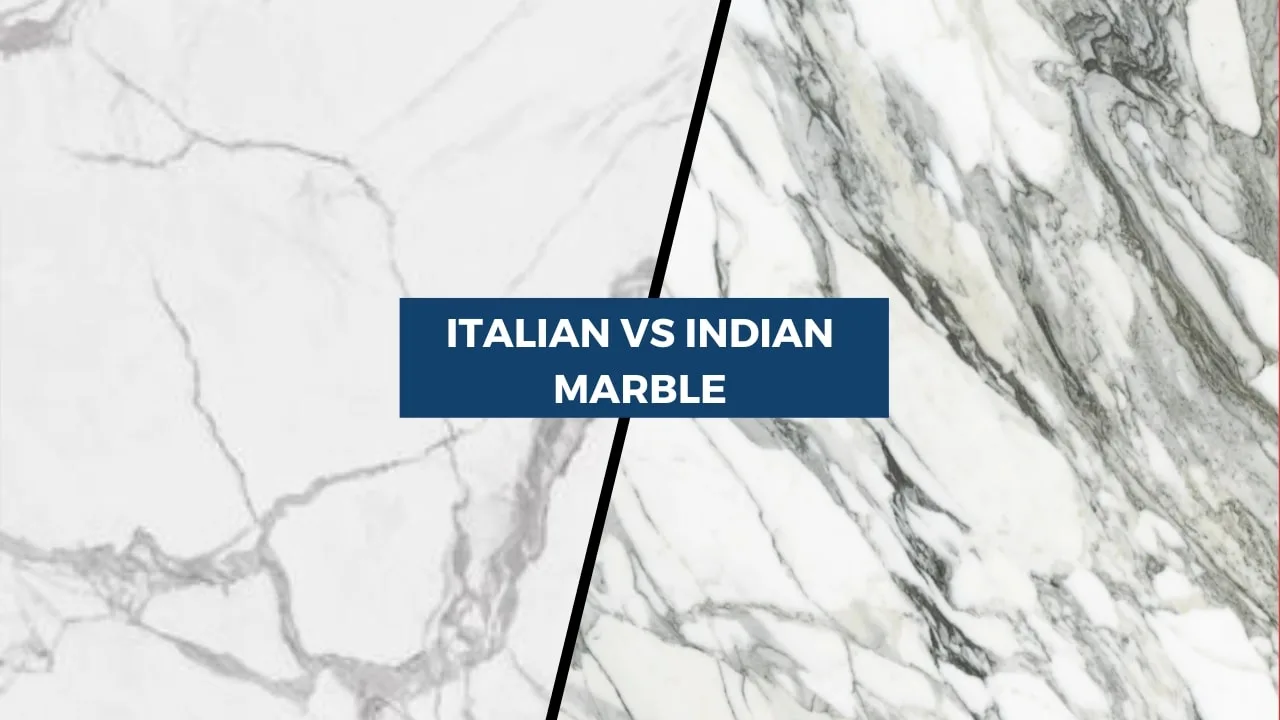- Home
- Advertising and Marketing
- Italian Marble vs Indian Marble: Which One is Right for Your Home?

Italian Marble vs Indian Marble: Which One is Right for Your Home?
When it comes to elevating the elegance of your home, few materials rival the timeless beauty of marble.
Specifically, Italian marble and Indian marble are two top contenders in the world of luxurious interiors.
With their luxurious veins, glossy finish, and ability to transform spaces, marble remains a favourite for countertops, flooring, and accent walls.
However, with so many marble options available, choosing the right one can feel overwhelming.
So, how do you decide between Italian marble and Indian marble?
Both are renowned, yet they cater to different tastes, budgets, and lifestyles.
To clarify, Italian marble is known for its high-end appeal and stunning finish.
On the other hand, Indian marble offers durability and beauty at a more accessible price point.
Therefore, understanding their key differences can guide your decision.
Ultimately, let’s break down what sets them apart to help you decide which marble truly deserves a place in your home.
What is Italian Marble? The Epitome of Luxury
Italian marble is synonymous with sophistication. Quarried from the mountainous regions of Carrara, Tuscany, and Lombardy, this marble has been the go-to choice for iconic structures like Michelangelo’s David and Roman temples.
Popular Types:
- Carrara: Soft gray tones with feathery veins.
- Calacatta: Bold, dramatic veins on a bright white backdrop.
- Statuario: A blend of Carrara and Calacatta, featuring sharp contrasts.
Why Homeowners Love It:
Italian marble is prized for its refined aesthetics and high-end appeal. Its subtle veining and creamy hues fit seamlessly into modern, minimalist, or classic interiors. Plus, its relatively low porosity makes it slightly more resistant to stains (with proper sealing).
What is Indian Marble? The Pride of Heritage
IIndia’s marble legacy dates back centuries—notably, the Taj Mahal, a UNESCO World Heritage Site, was built with pristine Makrana marble.
Today, India stands as one of the largest marble producers, offering stones that balance beauty and affordability.
Popular Types include:
- Makrana Pure White: Bright white with minimal veins (famously used in the Taj Mahal).
- Rajnagar White: Warm ivory tones and subtle patterns (perfect for elegant, understated spaces).
- Ambaji Green: Unique greenish hues (ideal for bold, statement-making pieces).
Furthermore, Indian marble offers a wide variety of options to suit different aesthetics.
From crisp whites and soft pinks to deep greens, there’s something for every taste.
In addition, its cost-effectiveness makes it highly appealing for homeowners on a budget.
As a result, it’s ideal for large-scale projects like flooring without breaking the bank.
Italian vs Indian Marble: 5 Key Differences
1. Price: Budget vs Splurge
- Italian Marble: Costs 2–3x more than Indian marble due to import taxes, limited supply, and prestige. Expect ₹800–₹5,000 per square foot.
- Indian Marble: Locally sourced, it’s budget-friendly at ₹100–₹400 per square foot.
Tip: Love the Italian look but on a budget? Opt for Indian marbles like Makrana that mimic Carrara’s elegance.
2. Appearance: Subtle vs Bold
- Italian: Known for delicate veins and neutral tones (whites, grays, beiges). Perfect for creating a sleek, airy vibe.
- Indian: Offers vibrant colors and bolder patterns. Think green, pink, or black marble for eye-catching accents.
Design Tip: Use Italian marble for countertops to add understated luxury. Choose Indian marble for floors or walls to inject personality.
3. Durability & Maintenance
Both marbles are durable, but their maintenance needs differ:
- Italian Marble: Less porous, so it’s less prone to staining. Still requires yearly sealing.
- Indian Marble: Slightly more porous; needs sealing every 6–8 months.
Pro Tip: Avoid acidic cleaners (lemon, vinegar) on both types—they can etch the surface.
4. Availability
- Italian Marble: Limited supply and imported, which can lead to longer wait times.
- Indian Marble: Easily available across India, with quicker delivery.
Fun Fact: Rajasthan produces over 90% of India’s marble!
5. Sustainability
- Italian Marble: Quarries follow strict environmental regulations, but long shipping distances increase its carbon footprint.
- Indian Marble: Local sourcing reduces emissions, but some quarries lack eco-friendly practices.
Ask Your Supplier: Opt for vendors who adhere to sustainable mining (e.g., RERA-certified stone).
Read Full Comparison – Key Comparison Points: Italian Marble vs Indian Marble
Which Marble Should You Choose?
Your decision boils down to three factors:
- Budget: If cost is a priority, Indian marble delivers elegance affordably.
- Aesthetic Goals: Want a classic, neutral palette? Go Italian. Prefer color variety? Choose Indian.
- Lifestyle: Busy household? Italian’s lower maintenance might suit you better.
Still Undecided? Mix both! Use Italian marble for a kitchen island and Indian marble for bathroom floors.
Final Thoughts
Whether you choose Italian marble or Indian marble, both can elevate your home’s aesthetic. Italian marble offers timeless luxury for those willing to invest, while Indian marble provides versatility and affordability without compromising beauty.
Before deciding, visit stone yards, compare slabs in natural light, and consult experts. After all, marble isn’t just a material—it’s a statement of your style.
Read More: Hyundai Creta Tops Best Selling Car of March 2025
FAQs
Q: Which marble is more durable Italian Marble or Indian Marble?
A: Both are equally durable, but maintenance varies. Italian marble requires less frequent sealing.
Q: Can Indian marble look as luxurious as Italian?
A: Absolutely! Polished Makrana or Udaipur Green can rival Italian stones in grandeur.
Q: Which marble increases home resale value?
A: Italian marble often appeals more to luxury buyers, but well-maintained Indian marble also adds value.